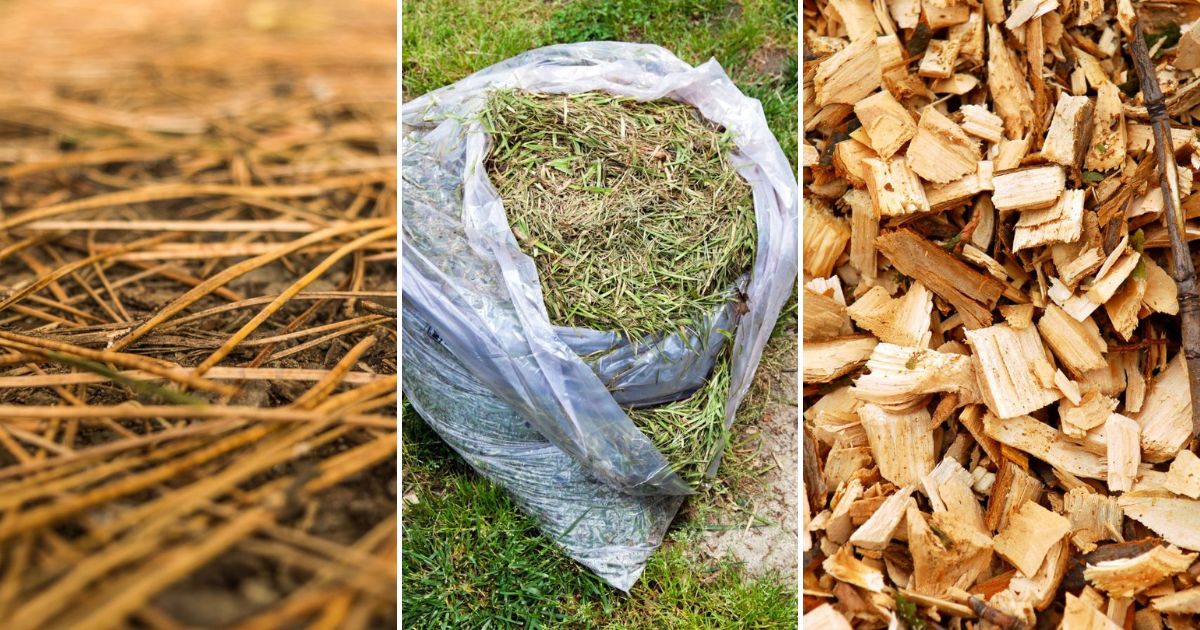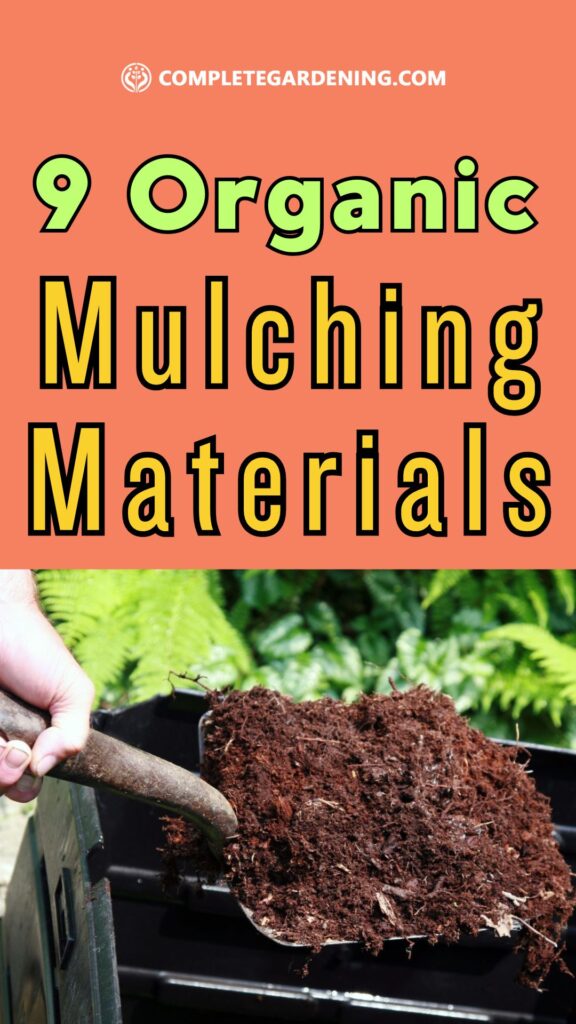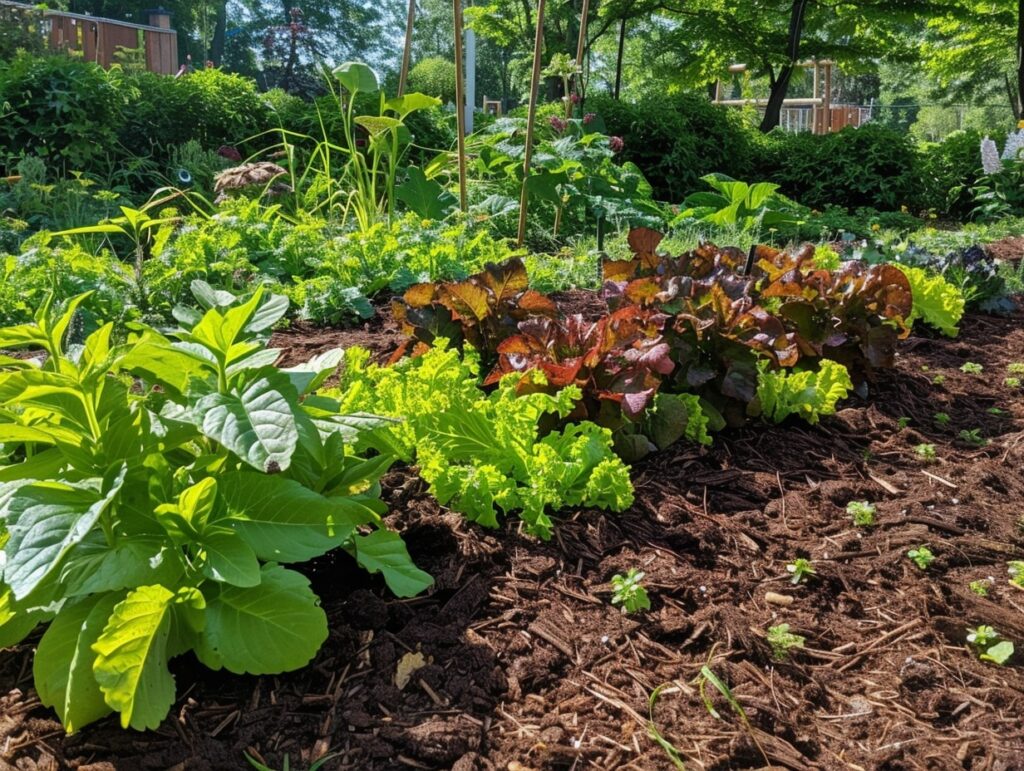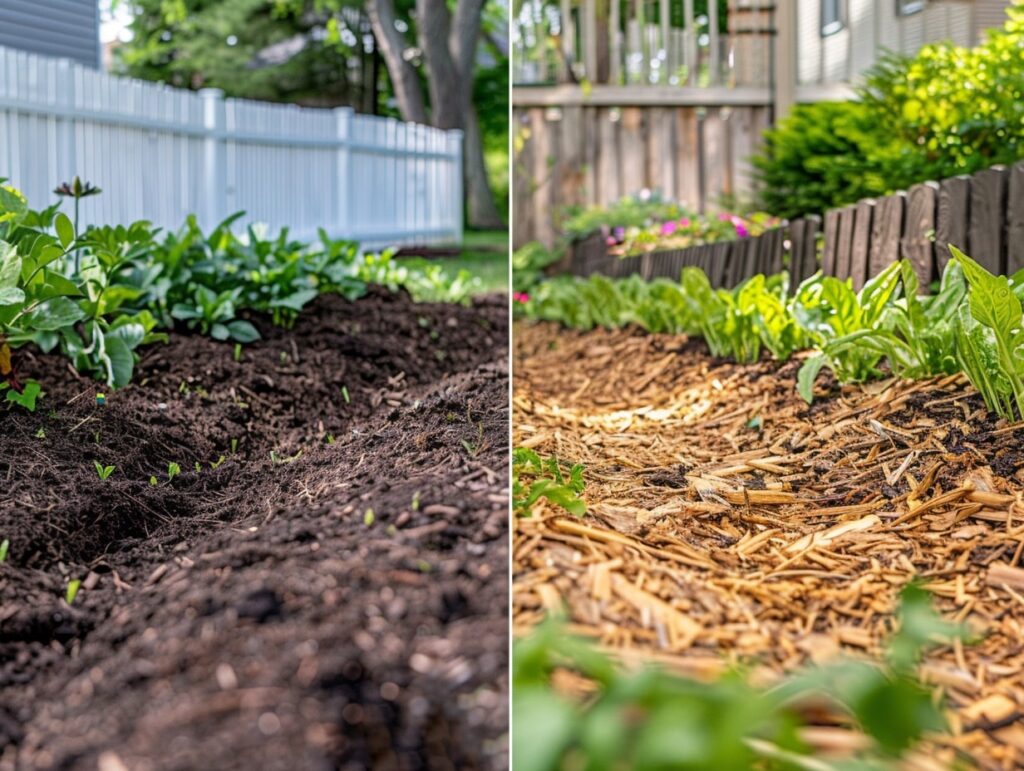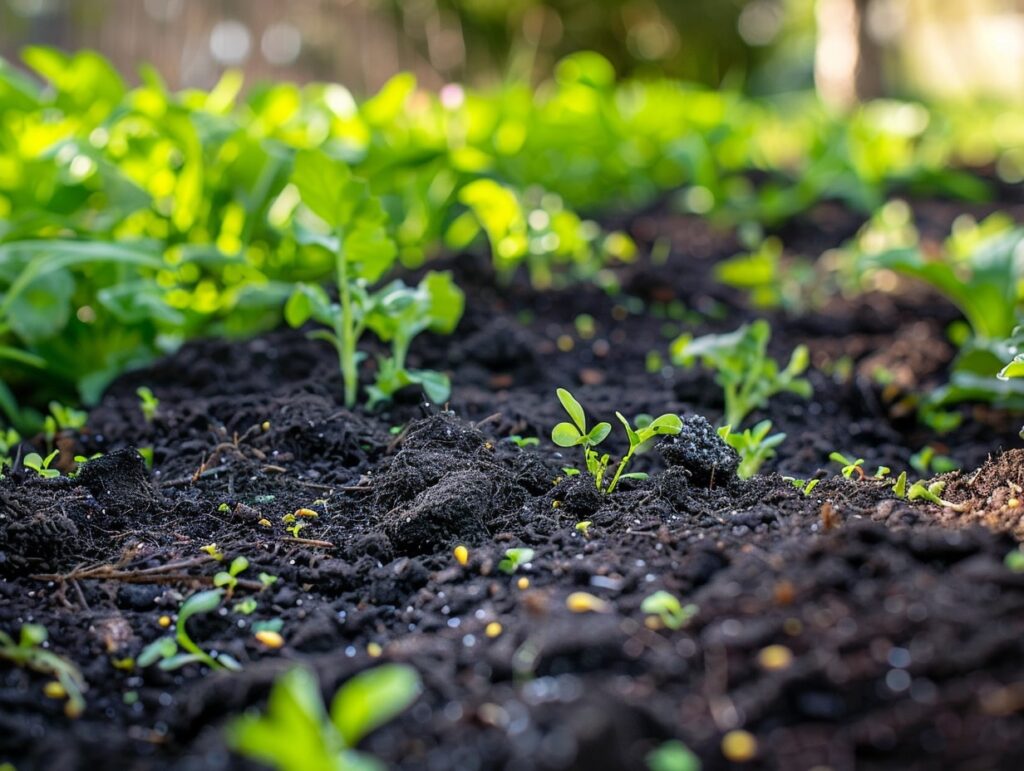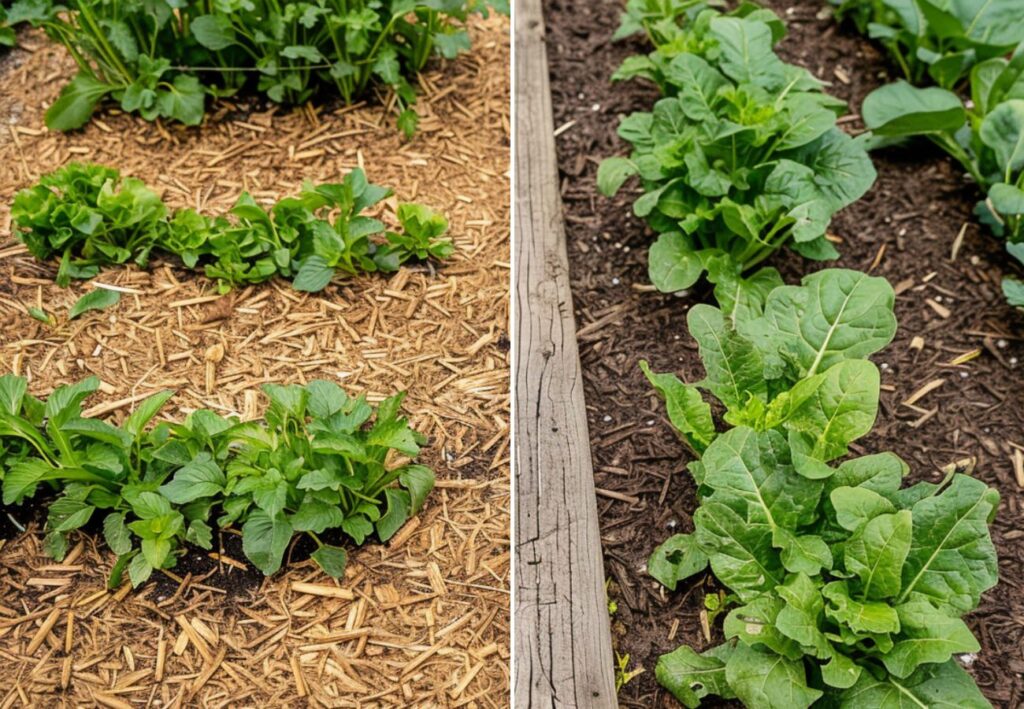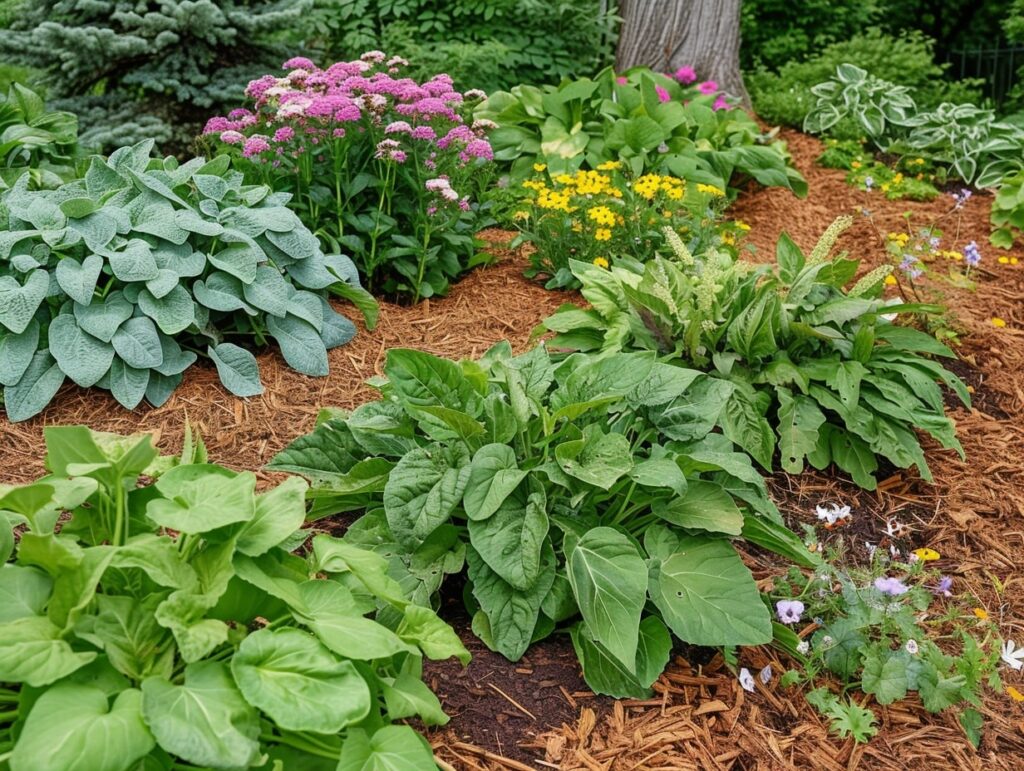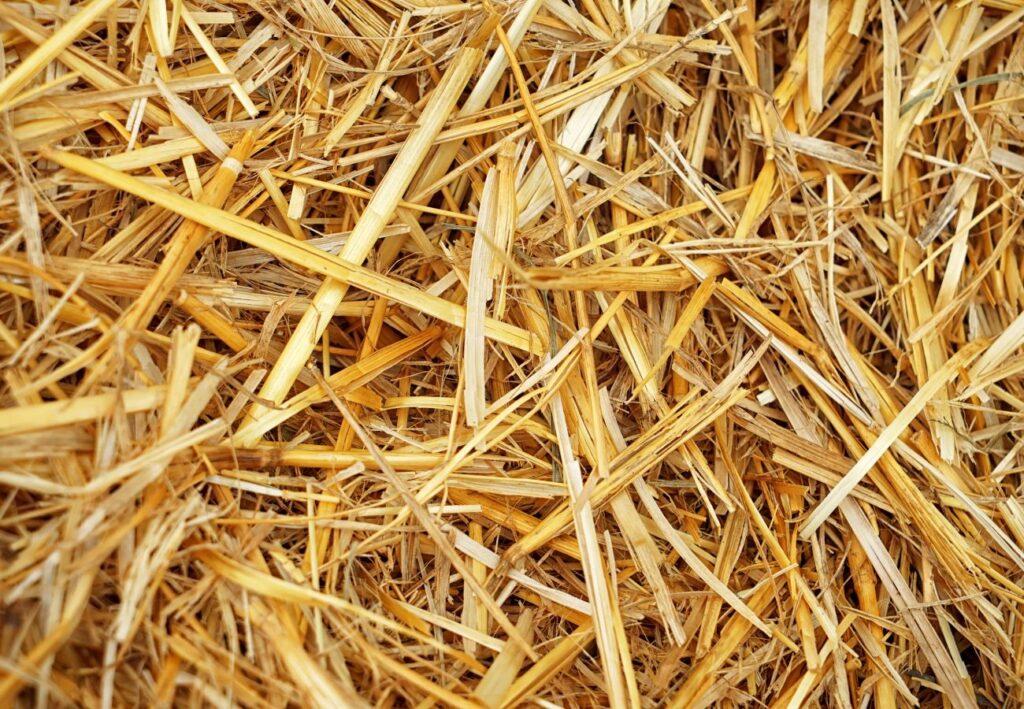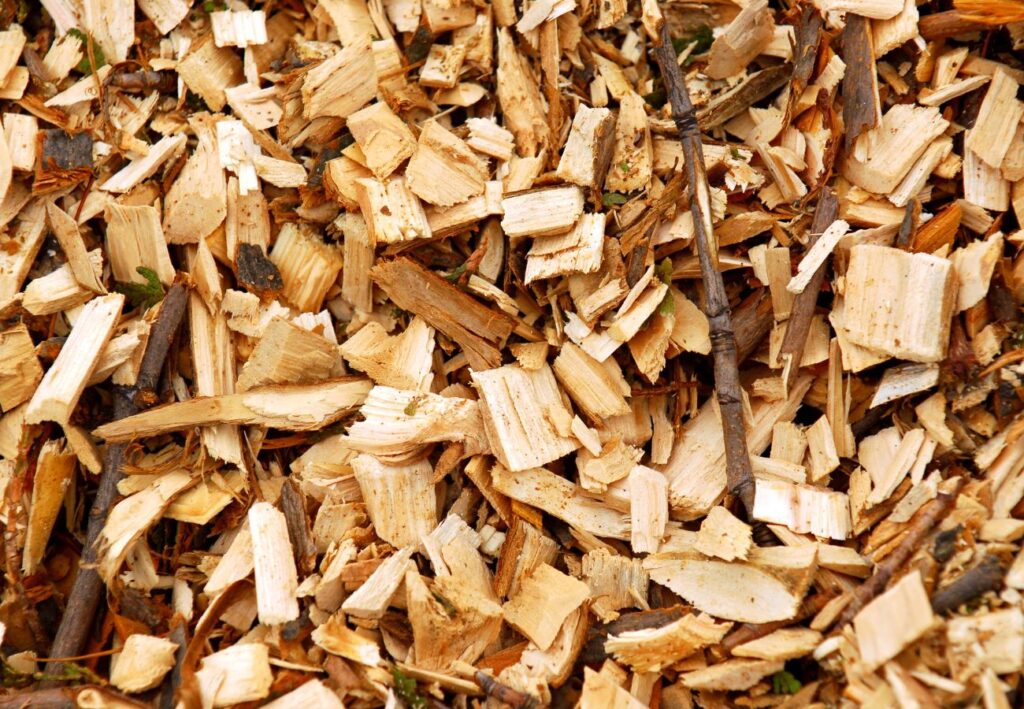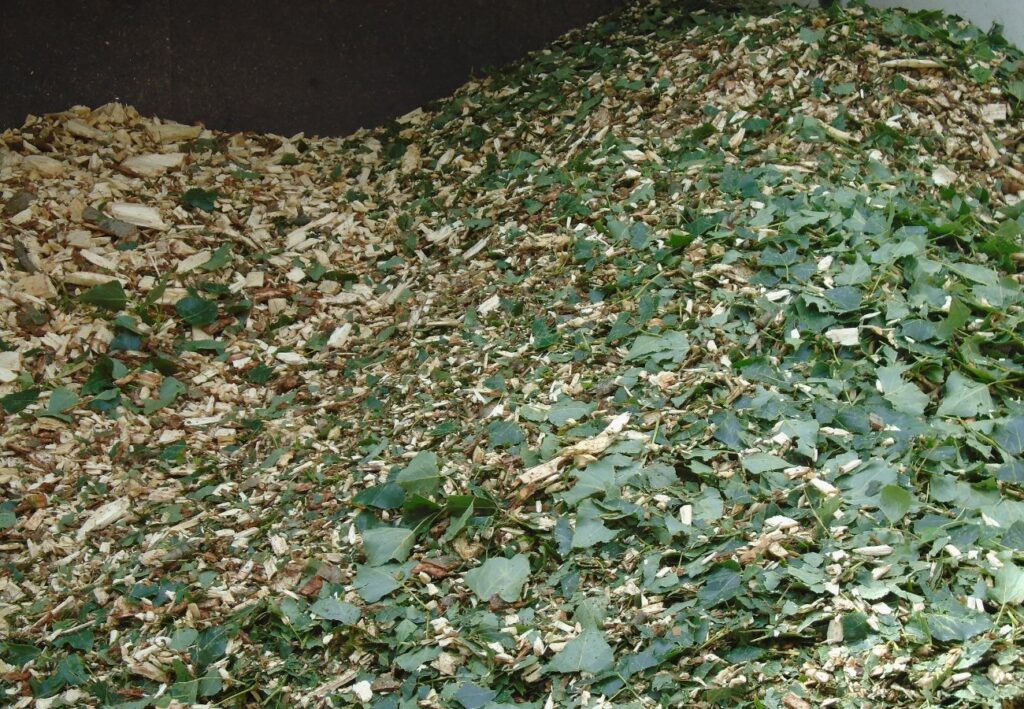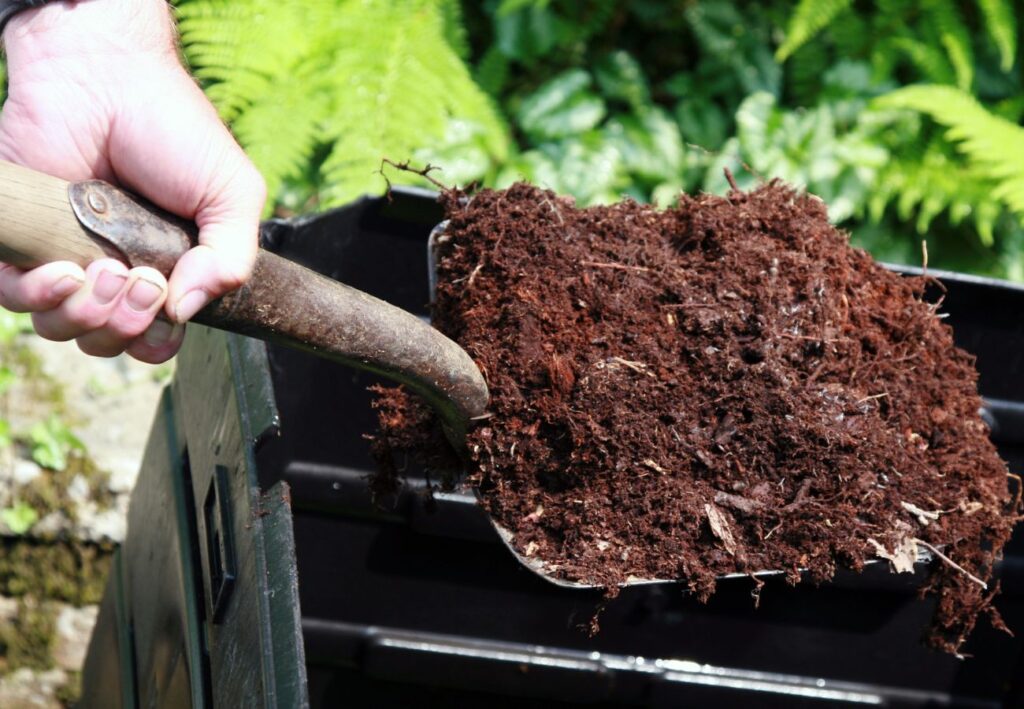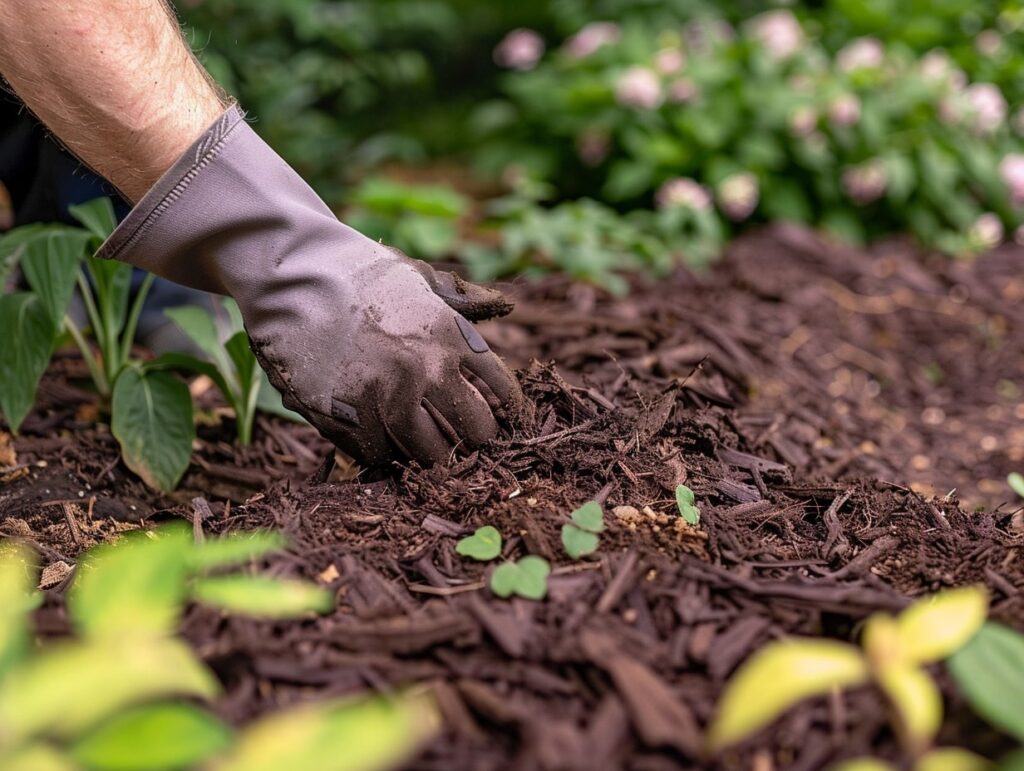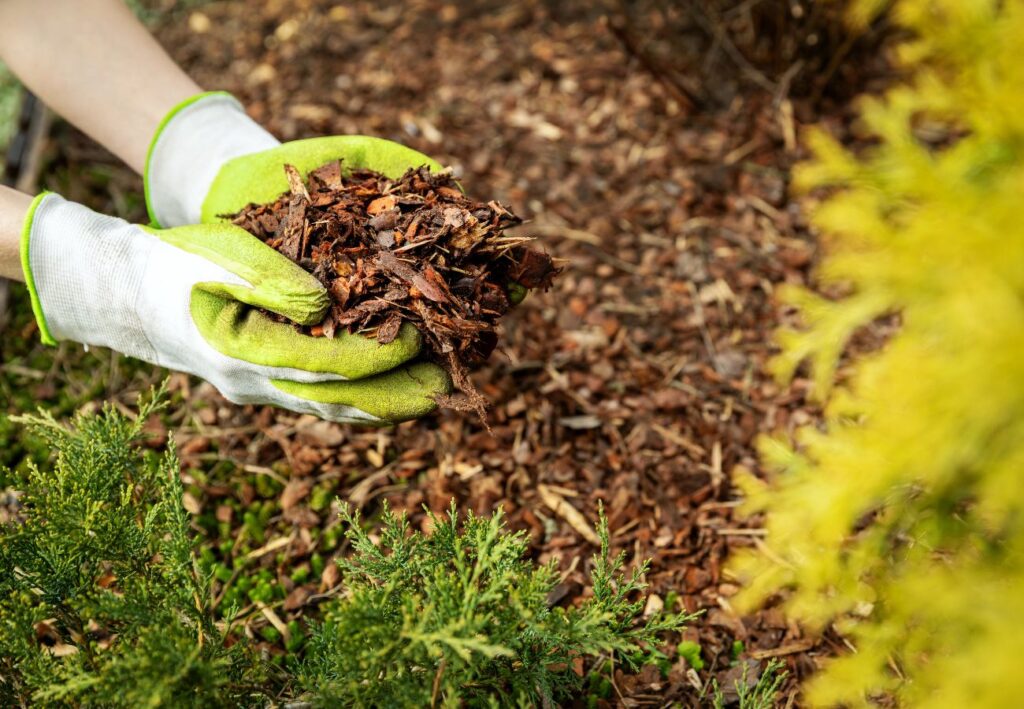Struggling with dry, weed-infested garden beds? Organic mulching materials might be the solution you’ve been searching for. These natural remedies improve soil health, retain moisture, and regulate temperature, making your garden more vibrant with less effort.
Imagine healthier plants and a beautiful landscape with fewer weeds and less watering. Organic mulches don’t just solve your garden problems; they enhance its beauty too.
Visualize the rich hues of wood chips or the lush texture of compost, each adding a unique touch to your garden while boosting plant growth. Plus, these eco-friendly choices break down and enrich your soil over time, unlike synthetic alternatives.
Ready for a garden transformation? Discover how these 9 organic mulching materials can revolutionize your garden beds, offering you a greener, more sustainable way to cultivate a thriving garden.
Benefits of Organic Mulching
Organic mulching offers numerous advantages for gardeners. These include retaining soil moisture, reducing weed growth, regulating soil temperature, and adding nutrients to the soil.
Soil Moisture Conservation
Organic mulches help retain water in your soil, reducing the need for frequent watering. By covering the soil, mulches minimize water loss due to evaporation. This is especially beneficial during hot and dry seasons.
A variety of materials, from straw to wood chips, can be used, providing flexibility based on your garden’s needs. The layer of mulch acts as a barrier, helping the soil remain moist longer.
This moisture retention encourages deeper root growth, improving plant stability. It’s an efficient way to conserve water and promote a healthier garden ecosystem.
Weed Suppression
One of the most significant benefits of mulching is its ability to suppress weeds. By blocking sunlight from reaching the soil, mulch prevents weed seeds from germinating.
This means less time spent on weeding and more time enjoying your garden. A 2-3 inch layer of organic mulch is generally effective in controlling weeds.
Not only does this reduce your workload, but it also prevents weeds from competing with your plants for nutrients and water. This leads to stronger, healthier plants.
Temperature Regulation
Mulch regulates soil temperature, keeping it cooler in the summer and warmer in the winter. This temperature buffering protects plant roots from extreme conditions and stress.
In the summer, the mulch’s insulating properties keep roots safe from heat. In the winter, it provides a blanket that prevents soil from freezing quickly.
This temperature regulation is crucial for perennial plants and vegetables, ensuring they thrive year-round. It provides a more stable environment for plants.
Nutrient Addition
As organic mulches decompose, they gradually release nutrients back into the soil. This natural process enriches the soil, enhancing its fertility over time.
Mulching materials like grass clippings, compost, and leaves are excellent sources. They break down into beneficial organic matter.
This not only improves soil structure but also increases its ability to retain moisture and nutrients. Your plants benefit from a steady supply of essential elements, promoting robust growth and productivity.
Considerations Before Choosing Mulch
Choosing the right mulch is essential for the health of your garden beds. You need to consider factors such as your local climate, soil type, the plants you’re growing, and how quickly the mulch will decompose.
Local Climate
Your region’s climate greatly impacts mulch selection. In hot and dry climates, opt for mulches that retain moisture like straw or grass clippings. These materials help keep the soil cool and moist.
In wetter climates, choose mulches that allow for better drainage, such as bark chips or pine needles. These options are less likely to become waterlogged, preventing issues like root rot.
It’s important to match the mulch type with your local weather patterns to ensure the best results for your garden.
Soil Type
Soil type affects how well mulch performs. Sandy soils benefit from heavier mulches like compost or leaf mold, which add organic matter and improve moisture retention.
Clay soils can compact easily, so lighter mulches like straw or shredded leaves work better. They help improve aeration and prevent crusting.
Test your soil’s pH and drainage before deciding on a mulch type to enhance your soil’s health and structure.
Plant Types
Different plants have unique mulching needs. Vegetable gardens thrive with organic mulches like straw or compost that break down quickly, adding nutrients to the soil.
Flower beds might benefit more from bark mulch or wood chips, which decompose slowly and enhance aesthetic appeal.
Perennial plants often do well with mulches like pine needles that provide a consistent protective layer, maintaining soil temperature and moisture.
Mulch Decomposition Rate
The rate at which mulch decomposes influences how often you’ll need to replace it. Fast-decomposing mulches like grass clippings or leaves nourish the soil quickly, needing frequent replacement.
Slower-decomposing mulches such as bark chips or wood shavings are more durable and require less frequent replenishment.
Consider the maintenance level you’re comfortable with and choose a mulch that fits your gardening routine.
Types of Organic Mulch
Organic mulch options vary from straw and hay to wood chips, each offering unique benefits such as weed suppression, moisture retention, and soil enrichment. These mulch types can transform your garden beds while being environmentally friendly.
Straw and Hay
Straw and hay are common mulch choices due to their affordability and ease of use. Straw, derived from grain crops, helps suppress weeds and retains moisture. Hay, while often richer in nutrients, may contain weed seeds.
Spread them lightly to avoid matting, which can block water and air. Be sure to use a weed-free variety for the best results. Both materials decompose over time, enriching the soil as they break down.
Wood Chips
Wood chips are a popular mulching material and are effective at retaining soil moisture and regulating temperature. They decompose slowly, providing long-term soil benefits.
Choose untreated wood chips to avoid harmful chemicals. Apply a layer about 2-3 inches thick to prevent weeds and avoid piling them against plant stems to reduce the risk of rot. Wood chips are particularly good around shrubs and trees.
Grass Clippings
Grass clippings are an easy way to recycle lawn waste into valuable mulch. They add nitrogen to the soil as they decompose, which is beneficial for plant growth.
Ensure the grass is weed-free and dry before application. Apply a thin layer to prevent it from becoming slimy and compacted, which can create a barrier to water and air. Grass clippings work well in vegetable gardens and around annual flowers.
Shredded Leaves
Shredded leaves make excellent mulch for a variety of garden beds. They are rich in nutrients and decompose relatively quickly, enhancing soil structure and fertility.
Shred the leaves before applying them to prevent matting. A 2-3 inch layer is ideal. They are particularly useful in flower beds and vegetable gardens. Shredded leaves can also be used to protect plants during winter by insulating the soil.
Pine Needles
Pine needles, or pine straw, are a lightweight and aesthetically pleasing mulch option. They are acidic, making them a great choice for acid-loving plants like azaleas and blueberries.
Spread pine needles 2-3 inches deep. They are slow to decompose and excellent at preventing soil erosion. Pine needles are also useful for reducing weed growth and keeping the soil cool.
Compost
Compost is one of the most beneficial mulches you can use in your garden. It enriches the soil with nutrients, improves soil structure, and promotes beneficial microorganisms.
Apply a 1-2 inch layer of compost around your plants. It can be used in vegetable gardens, flower beds, and around shrubs. Compost not only mulches but also feeds your plants, making it an excellent all-in-one material.
Cardboard and Newspaper
Cardboard and newspaper are effective for suppressing weeds and conserving soil moisture. They break down and add organic matter to the soil over time.
Place a layer of cardboard or several layers of newspaper around your plants. Wet the material to keep it in place and cover it with a thin layer of more attractive mulch like straw or wood chips. This method is great for initial weed control in new garden beds.
Application Techniques for Optimal Results
Achieving the best results with mulching requires attention to thickness, timing, and ongoing maintenance. Proper application ensures that your garden benefits fully from organic mulch.
Mulch Thickness
Applying the right thickness of mulch is crucial. Too little won’t be effective, while too much can smother plants. Aim for a uniform layer of 2 to 4 inches.
Thicker layers work well for coarse materials like wood chips. For finer mulches like shredded leaves, stick to the lower end of the range. This balance helps retain moisture and suppress weeds efficiently.
Ensure the mulch doesn’t touch plant stems or tree trunks, creating a “mulch volcano” effect. This can lead to rot and disease. Leave a small gap around plants to promote air circulation.
Timing of Application
Timing your mulch application can enhance its benefits. Apply mulch in mid to late spring, when the soil has warmed up from winter but isn’t completely dry.
This timing helps conserve moisture before the hot summer months. Fall is another good time to apply mulch, as it can insulate plant roots from winter cold.
Replenish mulch as needed, typically once a year. If it breaks down too quickly or if you’re growing annuals, you might need to add more. Fresh mulch keeps your garden beds looking tidy and effective.
Maintenance Tips
Regular maintenance ensures your mulch continues to benefit your garden. Check the mulch layer every few months to see if it needs topping up.
Rake the mulch occasionally to prevent compaction, which can obstruct water and air flow. This also helps redistribute decomposed materials and exposes new layers to the elements.
Watch for signs of pests or disease. If you notice any issues, remove the affected mulch and replenish with fresh material. Simple maintenance practices keep your mulch working efficiently and your garden thriving.
Common Mistakes to Avoid
Mulching is a great strategy for healthy garden beds, but it’s important to avoid certain pitfalls. Missteps like over-mulching, using tainted materials, and neglecting local pests and diseases can compromise your efforts.
Over-Mulching
Applying too much mulch can harm your plants. It might seem like more is better, but a thick layer can prevent air and water from reaching the soil.
Keep mulch layers between 2 to 4 inches. This thickness provides adequate insulation and moisture retention without suffocating plant roots.
Too much mulch can also encourage pests and diseases, as damp conditions create an inviting environment for issues. Stick to the recommended depth, and always monitor the condition of your mulch.
Using Contaminated Materials
Be cautious of where you source your mulch. Contaminated materials can introduce weeds, pests, and diseases into your garden.
Avoid using mulch that comes from unknown or unreliable sources. Look for certified organic mulch to minimize risks.
Regularly inspect your mulch for signs of contamination. If you notice anything suspicious, remove and replace the affected mulch promptly to protect your plants.
Ignoring Local Pests and Diseases
Every region has its own set of pests and diseases that can affect mulch performance. Neglecting these local factors can lead to bigger problems.
Research the common pests and diseases in your area. Choose mulching materials that are less likely to attract local pests.
For example, some types of organic mulch may attract termites or slugs. By understanding the local ecosystem, you can make informed choices that safeguard your garden beds. Regular monitoring is essential to catch and address issues early.
Incorporating organic mulching materials into your garden beds offers numerous benefits, including improved soil health, moisture retention, temperature regulation, and enhanced aesthetic appeal.
By choosing from a variety of options such as straw, wood chips, compost, and more, you can create a thriving, sustainable garden that requires less maintenance and promotes robust plant growth. Embrace organic mulching to foster a vibrant, eco-friendly outdoor space.
